Peter Lindberg, 1989, Linda Evangelista, Blazer New York, Vogue Italia, 1989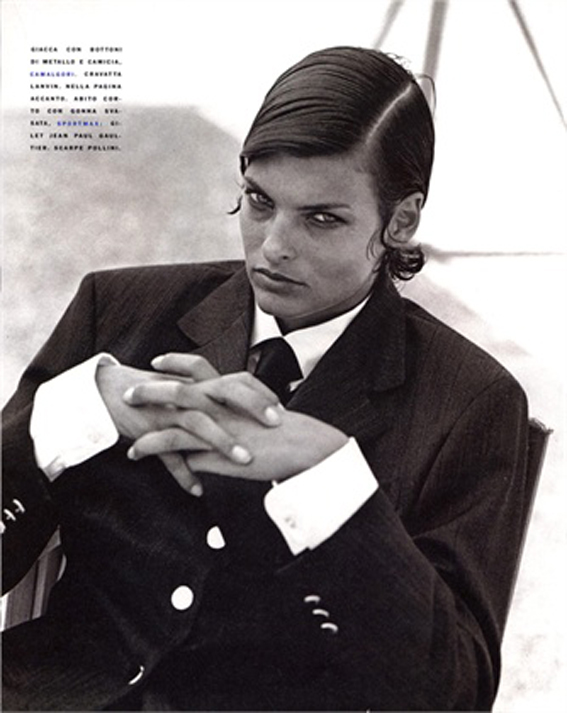 Peter Lindbergh, 1990, Blazer Camalgori, Vogue Italia, 1990
Peter Lindbergh, 1990, Blazer Camalgori, Vogue Italia, 1990 Richard Avedon, 1967, Penelope Tree, Tailleur American model, Vogue Italia, 1967
Richard Avedon, 1967, Penelope Tree, Tailleur American model, Vogue Italia, 1967
Imagine a pair of trousers essentially cut. A cigarette model. With pence. Or pockets. With the final flap. Or straight to lightly touch the shoes.
Add a white shirt. Unbuttoned to give a glimpse of black lace underwear. If possible, add a thin tie. Not cramped. Alternatively, you can imagine a silk blouse. As transparent as possible.
Over a blazer. Unstructured and rich in detail. Maybe with the sleeves rolled up to discover the wrists.
Leave your moccasins in the car or even in the taxi and wear a pair of stilettos. As high as possible. Essential and sober. Even if someone dares with the animal.
Melt the hair. Probably wavy. Possibly with fringe. Because the style is a bit boyish in the ‘Paris of the thirties’.
When Coco Chanel, in the late ’20s, was stealing, for the first time, the clothes to his lovers had in mind the image of a woman active and revolutionary. Short-haired. Without makeup. Able to roll up their hands and work.
Since then the evolution of the trend is documented by cinema and photography.
Katherine Hepburn in Sylvia Scarlett (1933) and Marlene Dietrich in Blonde Venus (1932)
But it is Yves Saint Laurent in 1966 to bring, for the first time, a woman wearing a Tuxedo on the catwalk.
Models and photographers from then on are producing a series of shoots in black and white that evoke a timeless atmosphere. Where style is wanted. The details accurate and the allure sophisticated, chic and almost irreverent at times.
Un pantalone a sigaretta o dal taglio classico. Un blazer o un cappotto dal taglio maschile. Immaginate un pantalone dal taglio essenziale. A sigaretta. Con pence. O tasche. Con il risvolto finale. O dritti che sfiorano le scarpe. Aggiungete una camicia bianca. Magari avvitata. Sbottonata a lasciar intravedere l’intimo di pizzo nero. Se possibile aggiungete una cravatta sottile. Non stretta. In alternativa una camicetta di seta. Il più trasparente possibile. Sopra un blazer. Destrutturato e ricco di dettagli. Magari con le maniche arrotolate a scoprire i polsi. Lasciate i mocassini in macchina e indossate un paio di stiletto. Il più alti possibile. Essenziali e sobri. Anche se qualcuno osa con l’animalier. Sciogliete i capelli. Probabilmente ondulati. Possibilmente con frangia. Perché lo stile a la garçonne è un po’ Parigi anni Trenta.
Quando Coco Chanel alla fine degli anni ’20 rubava per la prima i capi ai suoi amanti aveva in mente l’immagine di una donna attiva e rivoluzionaria. Dai capelli corti. Senza trucco. Capace di rimboccarsi le mani e lavorare.
Da quel momento l’evoluzione del trend è documentata dal cinema e dalla fotografia. Katherine Hepburn di Il diavolo è femmina (1933) e la Marlene Dietrich di Venere bionda (1932). Ma è Yves Saint Laurent che nel 1966 veste la donna della passerella con un Tuxedo al femminile.
Modelle e fotografi da quel momento in poi produranno una serie di scatti in bianco e nero che rimandano ad atmosfere senza tempo. Dove lo stile è ricercato. I dettagli curati e l’ allure sofisticata, chic e irriverente, a tratti.
Street Style 2012_Blue Blazer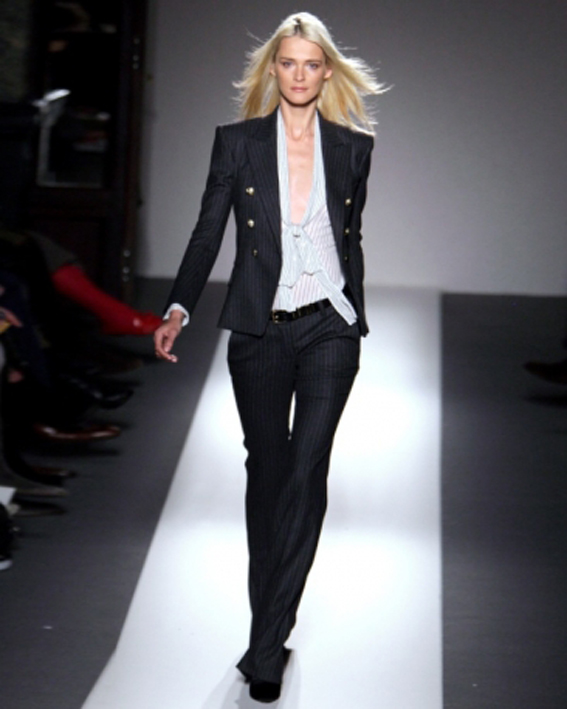
Parisienne elegance a la garçonne
Olivia Palermo
Vanessa Bruno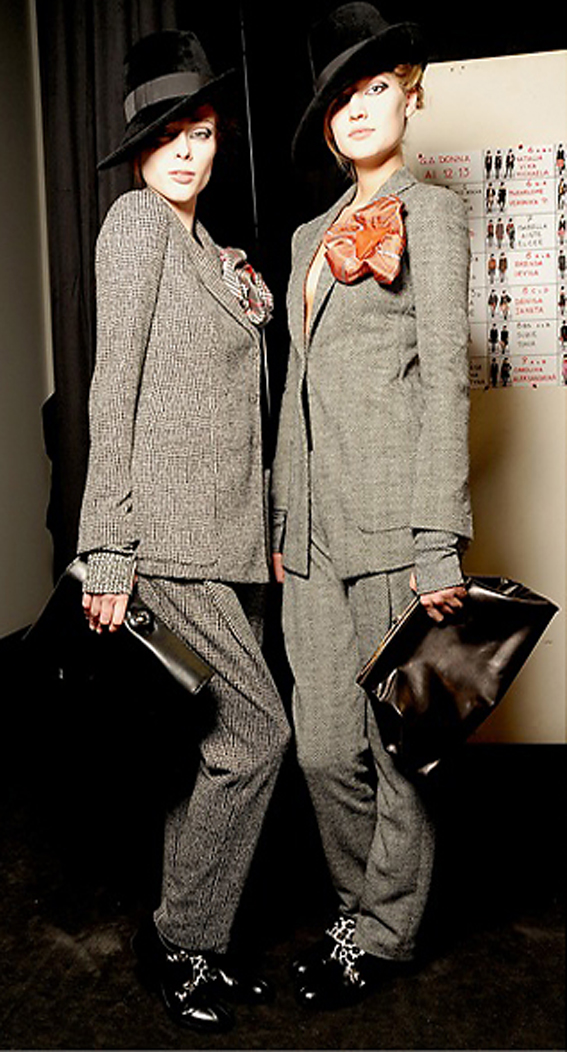 Giorgio Armani 2012
Giorgio Armani 2012
Bert Hardy, 1941, Anne Scott James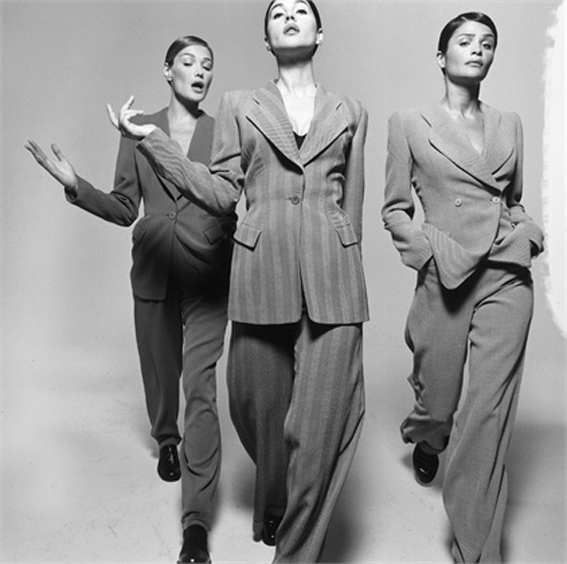 Michel Comte, 1995, Carla Bruni, Helena Christensen, Monica Bellucci, Giorgio Armani, Vogue Italia, 1995
Michel Comte, 1995, Carla Bruni, Helena Christensen, Monica Bellucci, Giorgio Armani, Vogue Italia, 1995




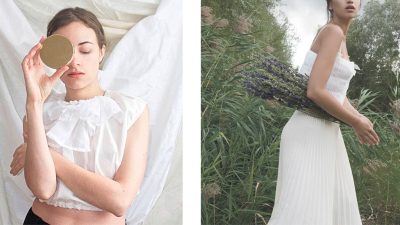

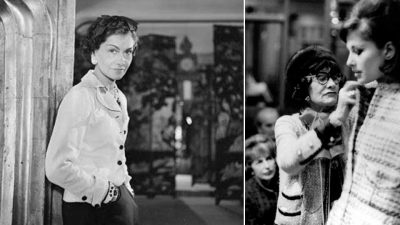

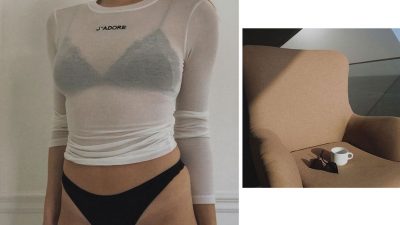
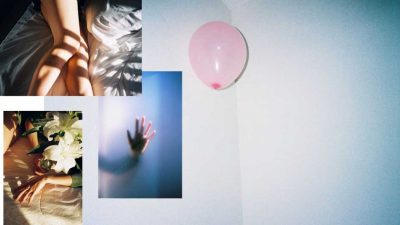
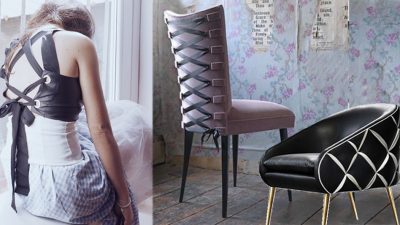
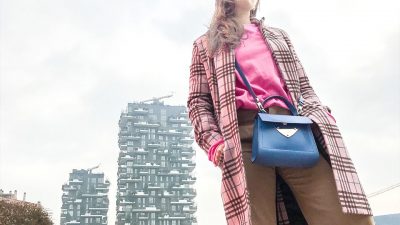
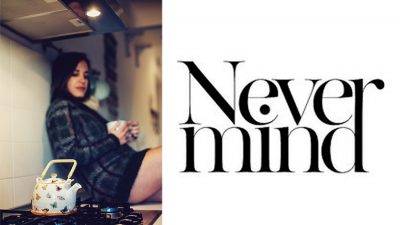
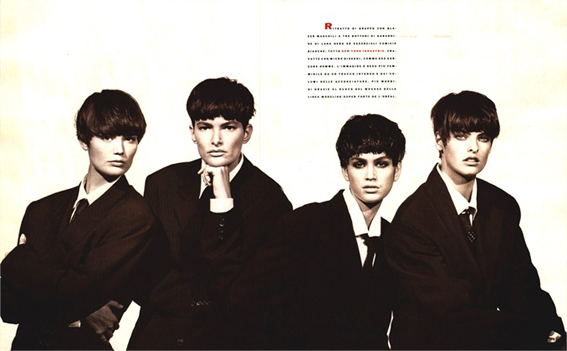
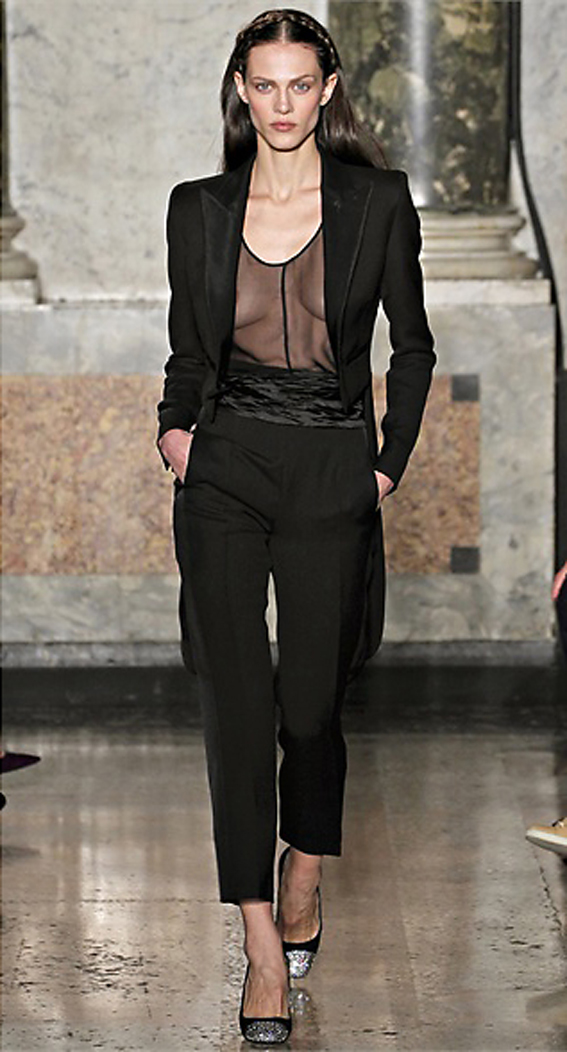
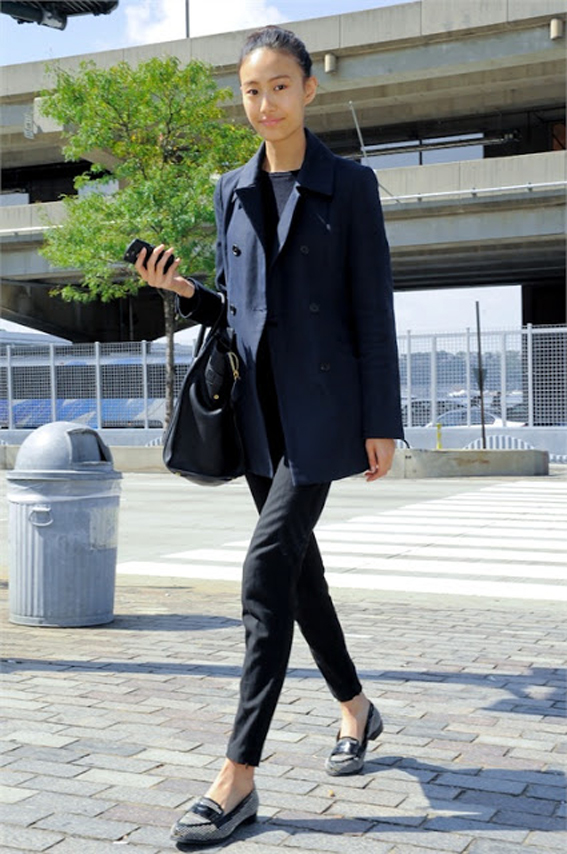


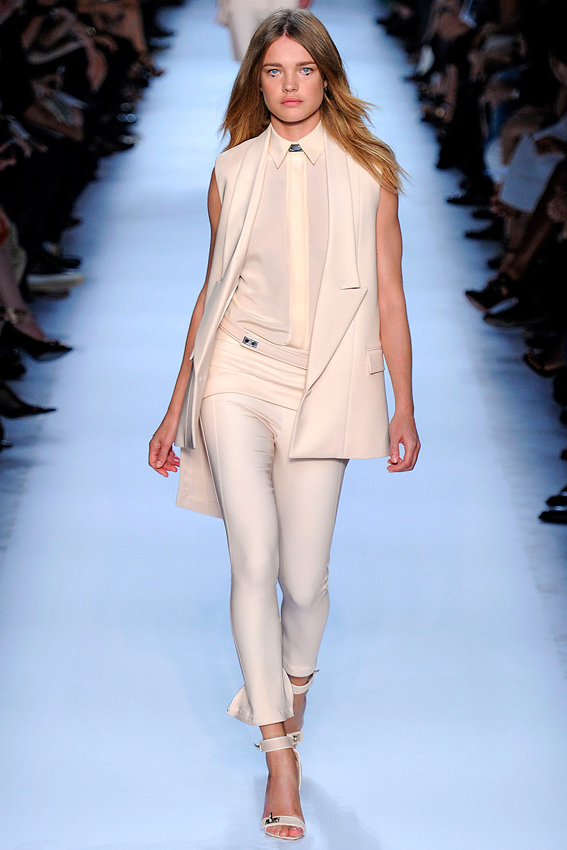

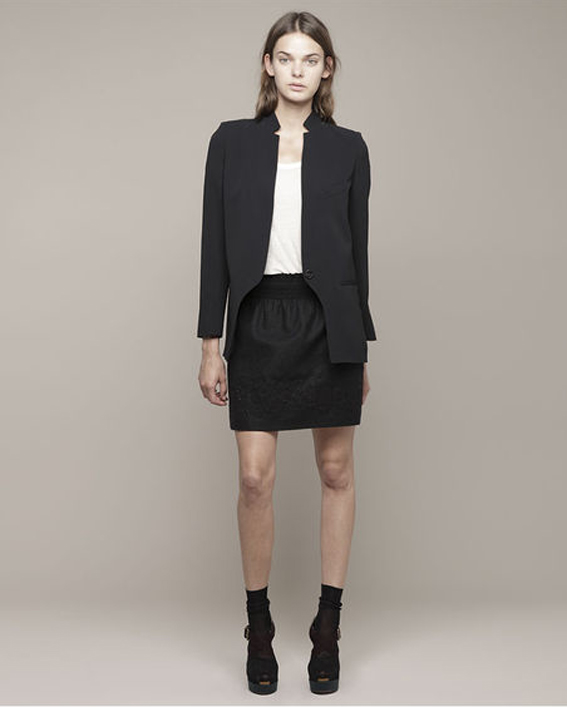
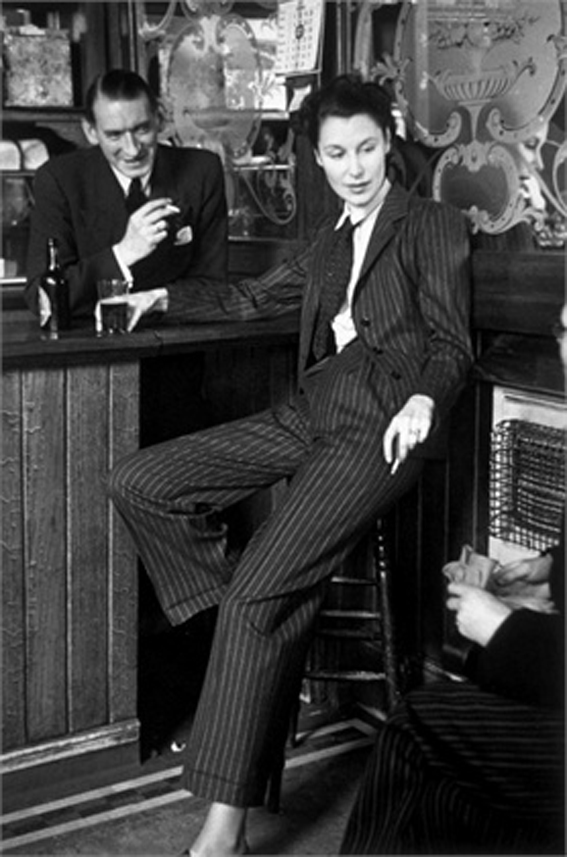
Comments
30 Responses to “The parisienne allure”
Great inspirations , lovely !
XX Luba
Well Living Blog :: Win a pair of fabulous Stuart Weitzman shoes , learn how ::
http://very-well-living.blogspot.com/2012/10/pearls-and-studs.html
I’ve never really tried this look, but I want to give it a try!
😀
love this post! mi e’ sempre piaciuta la “girl like a guy” 🙂
Anche a me! Mi affascina soprattutto nella versione con parti iper femminili!
😀
Love tuxedos on women! I would rather wear a tux jacket than a formal gown.
I think it’s definitely much more feminine!
I love blazers on women, look so classic and sexy at the same time!!
http://www.thefashionsecret.com
That’s true! Contrasts are always so interesting! have a great night
Ciao Mari:) mi piace molto lo stile un po’ maschile lo trovo molto seducente, anlcune volte più di un miniabito, poi vabbè le parigine sono tanta grazie, eleganza, e distinzione :))
BAcioni Clo
🙂 bellissimo questo post!
Ma quanto era bella Linda Evangelista? Rimane tra le mie TOP preferite
Ma quanto hai ragione…anche io la adoro e in queste foto è spaziale…oltre una modella, una attrice!
Wonderful post! I love blazers!
Hei! Blazer is that something can’t miss in everybody’s closet 😀
Most definitely! I love pairing a blazer with jeans. 🙂
real nice pics!! oh olivia always dresses wicked!
ohh woopsie meant to comment on your next post, haha,
i love this look! Would want to give it a try 😀
me too! never tried, but this fall I’ll definitely buy something. Power of fashion week! 😀
Take a pic when you do 😀
for sure! :*
Loving the clean lines, the suit always looks good!
I love the clean lines…I prefer to wear a male cut trousers with a super sexy shirt or a male shirt with a super skinny trousers :D. Contrasts are what I love more 😛
with that post you got me….! love it and follow you!! 😉
oh wow! with that comment you got me….thank you so much bellezza! xxx
J’adore!
so stylish…ti vedrei bene vestita così! :-*
the boys are back!!!!
even more feminine than ever! linda evangelista, in those shoots, is incredibly sexy and stylish!
great post!
Reblogged this on netportfolios and commented:
loving mannish models and looks